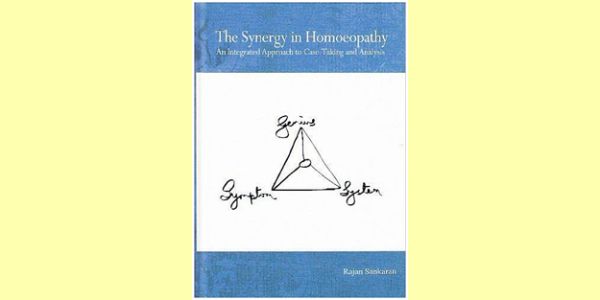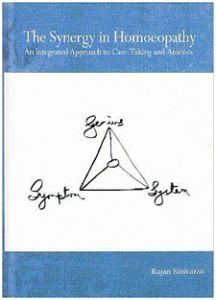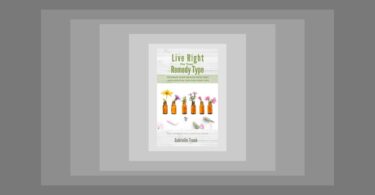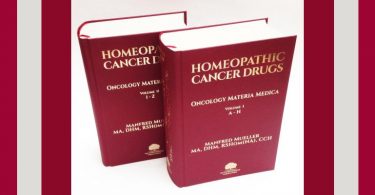The Synergy in Homeopathy – An Integrated Approach to Case Taking and Analysis
Publisher: Homoeopathic Medical Publishers, Mumbai, India, 2012.
ISBN: 9789380355849
Indian Hard Cover. 313 pp.
Weight: 575g
Price: approx. 65AUD / €49.50
Reviewer: Shilpa Bhouraskar
Dr Rajan Sankaran is a practitioner, thinker, teacher, and writer on the homoeopathic system of medicine. His concept that disease originates from a false perception of reality (delusion) was the subject of his first major book. He then discovered that our experience could exist on one of seven levels, beginning with the name and culminating in its sensory or energy experience. Here is a review of his latest book. Most of Dr Rajan Sankaran’s previous books describe his journey of going deeper and deeper into the patient’s core through the process of his case-taking and analysis system.
The emphasis was on being able to elicit the basic delusion or sensation in a patient and he created a system based on that, which can help the prescription. In so doing he has creatively evolved newer and more refined approaches in pursuit of improving the success rate.
On the one hand he has been applauded for creating some groundbreaking approaches in homoeopathy but on the other he has often been criticised for diverting away from so-called Hahnemannian or classical homoeopathic approaches. This book is refreshingly different because it is not about another new concept but about bringing together the old and the new. So in a way it is very realistic. He acknowledges that the Sensation idea holds true but he is not rigid about that approach of case taking. He does not see the new and traditional knowledge as separate but as complementing each other in a natural evolution of a homoeopath’s practice. Hence as the book cover denotes, this book is all about understanding the synergy between the symptom, the system and the genius in our cases.
The best part of the book is in the cases, where he has been able to look at the same case using the old and the new approaches. Here he explains clearly how symptoms and the system are two sides of the same coin and speak the same language from two angles. He explains how they are not mutually exclusive and can be used in parallel during case taking and analysis. Further he elaborates how the understanding of the medicine too can be integrated similarly through a combination of four resources i.e. the Toxicological, Materia Medica, Repertory and the System (classification and miasm). There are some interesting sections on dealing with psychiatric cases, children’s cases and acute situations with a kit of his favourite acute medicines.
For me the best part about this book is the way he acknowledges and appreciates that his process has come full circle from where he started in his first book i.e. from the symptom towards a system and now back to connect with the symptom and the genius of the case and medicine. Personally it evokes memories of his teaching during his OPD clinic when I was a student in 1996, where this synergetic approach was something I had seen him use practically in that busy clinic. So it’s wonderful to see it in book form for the first time. We definitely need many more books in homoeopathy such as these with more examples and cases where homoeopaths work using the integration of various approaches to give the best for their patients.
What I found missing are those cases where the symptoms and system do not come together. It would have been very useful to have his say on the way he would approach such cases, if he were to use either of the approaches, and his thought process. I would highly recommend this book to anyone who is a serious student of homoeopathy, especially for those who consider that contemporary approaches are divorced from Hahnemannian Homoeopathy. It is an open, honest book that is thought provoking and inspires the reader to be flexible and tap into the tremendous potential of what homoeopathy is.






